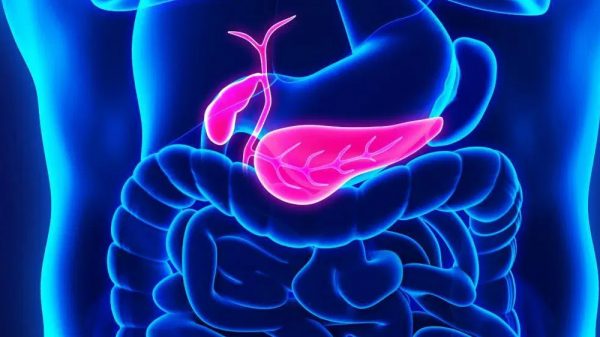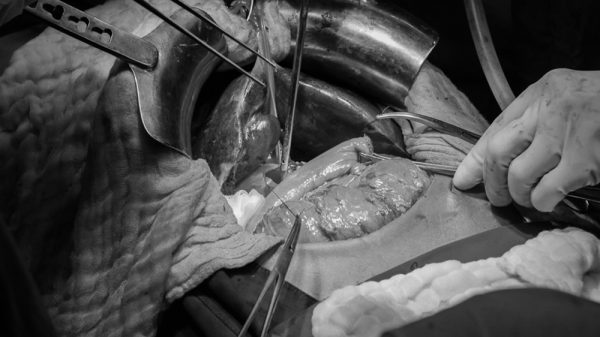Your peritoneum would contain some amount of fluid on a normal day. All things being equal, you should have about 50 to 100 ml of fluid in your peritoneum. But then, this fluid spreads across different regions of your peritoneum. This distribution depends on many different factors. Some of them include hydrostatic pressure (HP), as well as gravity. One of the regions on your peritoneum where fluid can accumulate is your perihepatic space. Fluid accumulation in your perihepatic space is called perihepatic ascites. This condition is not a rare occurrence. It occurs due to direct invasion of the perihepatic ligaments.
The HP in your peritoneum would change from time to time. This works hand in hand with many other factors. As these factors interact, they would cause fluid to migrate toward the under-side of your diaphragm. As fluid redistributes in your peritoneum, it becomes quite easy for inflammation, infections, and cancer to spread from one region to the others. The perihepatic ligaments seem to offer some kind of guard to the perihepatic space. However, this is not enough to protect the space from the normal fluid redistribution in the peritoneum. That is why abscesses, ascites, inflammation (perihepatitis), and cancer (perihepatic metastases) in the perihepatic space are not so uncommon. Therefore, perihepatic abscess, perihepatitis, or seeded perihepatic metastases are not uncommon.
Perihepatic Ascites
As we said earlier, it is normal to have some fluid in your peritoneum. But then, whenever the fluid exceeds the normal volume, there is a problem. Too much fluid in the peritoneum is called ascites.
Ascites is not a stand-alone health condition. It usually has a root cause. Ascites will never happen just by itself. There is always an underlying health issue that causes fluid to accumulate in the peritoneum.
Three out of every 4 cases of ascites in the perihepatic space is a result of cirrhosis. This means that liver cirrhosis is the most frequent cause of perihepatic ascites. However, in 10 percent of the cases, the cause of ascites in the perihepatic space is cancer (peritoneal carcinomatosis).
Another fairly common cause of ascites in the perihepatic space is heart failure. This is responsible for 5 percent of all cases.
There some unusual things that may, however, cause this form of ascites. They include accumulations of urine, blood, pancreatic juice, bile, or chyle.
If the attenuation of the buildup in your perihepatic space is very low (0–20 HU), finding the root cause may prove difficult. The nature of the ascites may also be hard to establish. But then, a few specific secondary findings may point to the possible cause.
For example, if you are managing cirrhosis, it is safe to conclude that it is the reason why you have ascites. Nodular thickening of the peritoneum may also suggest the cause of your ascites as cancerous.
If the attenuation of ascites in your perihepatic space is high (20 HU and above), the ascites is most likely a result of hemoperitoneum. That is the leakage of blood into your peritoneum.
Tuberculosis is another possible cause of a high-attenuation ascites in your perihepatic space. If that is the case, the attenuation of the ascites would be as high as 20 to 45 HU. Extravasation from your urinary or GI tracts may also cause ascites to develop in the perihepatic space.
Should You Be Afraid of Cancer?
Well, if cancer is responsible for 1 out of every 10 cases of perihepatic ascites, then should you be afraid of cancer if you have the condition? Well, your doctor would not stop as telling you that you have ascites. He will also tell you the cause.
The diagnosis of ascites is not complete until the doctor detects the root cause. So then, you should wait for your doctor to tell you why you have ascites. If your doctor doesn’t say there is a malignant cause, then there is nothing to fear.
While peritoneal malignancy can cause ascites, ascites does not lead to peritoneal malignancy. However, ascites can sometimes accompany elevated liver enzyme levels in cases where cirrhosis is the cause. Elevation of liver enzymes for a prolonged time can cause liver cancer.
You should understand, however, that even in such a case, ascites is not the cause of cancer. The real cause is the elevated levels of liver enzymes. This elevation just happens to some alongside ascites because they are both results of cirrhosis.
Peritoneal carcinomatosis usually arises from a person’s colon, ovary, pancreas, or stomach. This means that it is mostly a secondary malignancy. It originates from somewhere else and then spreads to the peritoneum.
When there is peritoneal carcinomatosis, there will be a high volume of ascites. This ascites is usually loculated. This means that the accumulated fluid is usually divided into small cavities. A CT scan may also show enhancements or thickening of your peritoneum. These may appear as nodular or smooth.
If your doctor finds peritoneal malignancy, he would seek to know where it originated from. Many times, however, malignant ascites is not a primary finding. A lot of people are already battling the primary malignancy before the complication of ascites shows up.
But then, the cancer cells that spread from the original site would find a place to implant within the peritoneum. Your doctor would also find out the implantation site.
Common sites where tumor cells implant in the peritoneum include the following:
- Subphrenic space
- Intersegmental fissure
- Lesser sac (Particularly its superior recess)
- Morison pouch
Conclusion
With the help of expert healthcare professionals, you can easily detect ascites in your perihepatic case. You will also be able to find out the root cause. Your healthcare provider would also guide you on how to treat the condition.
Some causes of perihepatic ascites are hard to tell apart. But then, certain radiologic features may help to tell them apart. In some cases, however, these features will overlap. In such cases, your medical history will be compared with the details from radiology tests to make a correct diagnosis. Once you get a correct diagnosis, proper treatment can begin.























